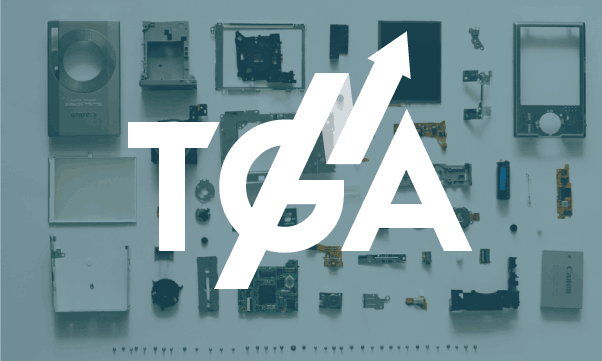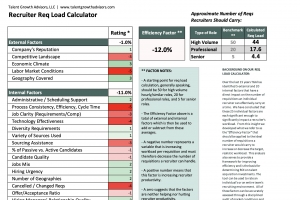Components of Intellectual Capital: The Two Essential Components that Drive Market Value

If Intellectual Capital (IC) accounts for a large proportion of the overall value of today’s public companies (and we know it does), then it is absolutely essential that organizations recognize the differences between the two components of IC – active and inert intellectual capital. With a clear understanding of these two components, companies can begin to build talent strategies that will drive improvements in the organization and its market valuation.
Over the last 35 years, the increased focus on higher education coupled with formal learning and skill building has stoked the production of intellectual capital and has driven the rapid expansion of IC value for enterprises. This trend has evolved and become more focused on business-relevant human capital development, which results in company market capitalizations that often reflect more than 80% intellectual capital value.
In order to optimize the two components of IC for greater business success, we must first define them:
Active intellectual capital is the human capital, or talent, within a company. It happens in real time and produces ideas that generate an outflow of intangible property that can be bought or sold by its owner.
Inert intellectual capital is the intangible property that is dependent solely on the output of the active IC component over time. Inert IC includes high value assets such as a company’s brands, patents, proprietary processes or technologies, and commercial relationships.
Most notably, inert IC cannot sustain itself, grow or evolve – it needs input from human capital to stay relevant. Depending on the size and success of investments in human capital, inert intellectual capital, such as a brand, can be accumulated or depleted over time. When successfully managed, a company’s inert IC can grow to have enormous value to a business – like with the Coca-Cola brand, which has accumulated an estimated value of $79 billion since its inception in 1886.
In the case of building the Coke brand, the company focuses on directing its human capital investments toward the challenge of creating product relevance that resonates with consumers at a particular point in time. Throughout the brand’s history, thousands of smart marketers have been hired, organized, managed and incented to understand what is relevant to consumers. With this collective expertise, insight and ingenuity, Coke’s messaging has evolved over time – from the turn of the century’s simple request to “Drink Coca-Cola” to today’s emotional appeal to “Open Happiness”. Ultimately, key business metrics provide an indicator for how successfully the talent’s efforts matched the consumers’ desires and, thus, advanced the brand.
The Coca-Cola example provides an excellent depiction of the roles of active and inert intellectual capital. The inert brand of “Coca-Cola” and the value it accumulates over time is dependent on the effectiveness of the human capital applied to it. All inert intellectual capital is created in a similar fashion whether the IC is a brand, formula, technology or patent (as in the case of a pharmaceutical company, for instance).
The Critical Role of Leadership to IC
Since a company’s market valuation is dependent upon the active component of IC, then the knowledge and skills that comprise human capital must be organized to be most effective. In today’s knowledge economy, it is critical that companies employ not only the talented individuals with subject matter expertise, but also the leaders with strategic and operational expertise. Being knowledge workers themselves, these leaders apply their knowledge and expertise to managing the application and performance of knowledge.
By establishing the appropriate organizing mechanisms and work processes, the company’s leadership is responsible for orchestrating the output of the talent’s efforts. In the case of brand development, such as in the Coke example, human capital must be channeled toward work processes that ensure that the appropriate market intelligence is gathered and analyzed, that products are designed, and that those products are then made available and promoted. Any IC value that is eventually created through this orchestration of efforts is then owned by the firm.
In order for organizations to take advantage of the benefits that effective knowledge management offers, companies must be prepared for the changes this new knowledge economy represents for leaders and managers. Organizations must evolve from an era when the object of leadership was to enable the efficient deployment of land, labor, machinery and equipment, to a time where leadership requires expertise in the deployment and performance of knowledge workers. As Peter Drucker, the founder of modern management, said, “Where there is effective management, that is, application of knowledge to knowledge, we can always obtain the other resources.”
Coming Soon
Look for more information on the leadership aspect of active intellectual capital as we delve deeper into the topic in future posts. Suffice it to say, companies that understand the active component of IC – and how inert IC is created – will be better positioned to invest in talent strategies that can successfully create, sustain and grow the value of their intellectual capital. These efforts are precisely those that result in an acceleration of the company’s market capitalization in our post-industrial economy.
Want to learn more about how business value, intellectual capital and talent are connected? Order our new book, Talent Valuation: Accelerate Market Capitalization through Your Most Important Asset.
Share this Article
Learn more about our unique approach to Talent Strategy Formulation.



